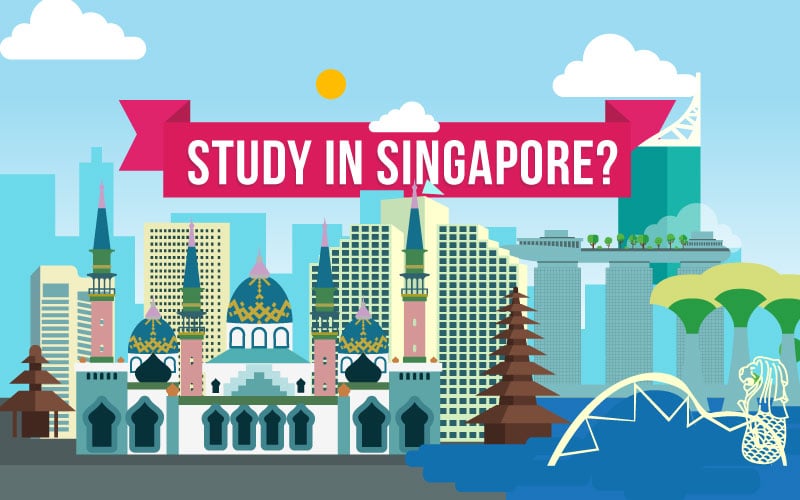Have you always wanted to attend an Ivy League school but lacked the necessary grades?
Surprise! You don’t have to be the ideal candidate.
The Ivy League’s eight schools are among the most prestigious in the United States, with presidents, Nobel Laureates, founders, and CEOs among their alumni.
As a result, the smartest and brightest minds from all over the world fight for spots in the Ivy League.
While no Ivy League school is easy to get into, some Ivies are easier to get into than others. Continue reading to find out which Ivy League schools are the easiest to get into.
Most high school kids have no idea how to get into the coveted Ivy League. Most people believe that great test scores, superb grades, dozens of extracurricular, and a stand-out essay are required to receive the coveted acceptance letter.
Fortunately, there is no one-size-fits-all strategy for Ivy League admissions, so you have some leeway and a variety of options for making your application stand out.
Table of contents
- What are Ivy League Schools?
- Which Ivy League School is the Best?
- Which Ivy League School is the Easiest to Get Into?
- What are the Qualities that Ivy League Schools look for in an Application?
- Ivy League School’s Admission Process
- 8 Easiest Ivy League Schools to Get Into
- Other Easiest Ivy League Schools’
- 6 Methods to Make your Ivy League Application Stand Out
- What Can I Do to Improve My Chances of Attending an Ivy League School?
- Conclusion
- References
Check Out: Top 17 Ivy League Universities in Canada, 2024 [Updated]
What are Ivy League Schools?
The eight colleges of the Ivy League were originally gathered together as an athletic conference and are noted for including some of the United States’ oldest, most well-known, and well-respected universities in the northeast.
Despite the fact that these schools have histories extending back hundreds of years, the Ivy League was founded in 1954.
Despite its sporting roots, the Ivy League is now known for its scholars rather than its athletes, as the entrance to these universities is extremely competitive.
Seven of the eight schools existed prior to George Washington’s presidency, though the term “Ivy League” was not coined until 1954 when the NCAA athletic conference for Division I was formed.
Ivy League schools are considered “the most sought-after institutions of higher learning in the country and around the world” because of their academics, social prestige, and ultra-selective admissions process. – According to U.S. News & World Report.
The Ivy League schools are listed below, along with some basic information about each.
| School Name | Location | Acceptance Rate | Undergraduate Enrollment |
| Cornell University | Ithaca, New York | 10.6% | 15,043 |
| Dartmouth College | Hanover, New Hampshire | 7.9% | 4,417 |
| University of Pennsylvania | Philadelphia, Pennsylvania | 7.7% | 6,311 |
| Brown University | Providence, Rhode Island | 6.6% | 6,752 |
| Yale University | New Haven, Connecticut | 6.3% | 5,964 |
| Princeton University | Princeton, New Jersey | 5.7% | 5,267 |
| Columbia University | New York, New York | 5.2% | 9,001 |
| Harvard University | Cambridge, Massachusetts | 5.1% | 6,699 |
Read Also: How to Get a Scholarship to an Ivy League School
Which Ivy League School is the Best?
Because all eight Ivy League schools are world-class institutions, ranking them is a difficult task.
Most university ranking publications use a variety of factors to rank universities.
We averaged the ranks of all eight schools across the US News Greatest National Universities, US News Best Colleges, and QS World rankings for 2024 to identify the best Ivy League (see table above).
Harvard is the finest Ivy League school in 2024, according to our list, followed by Princeton, Columbia, and Yale.
These rankings differ depending on the program or subject. Rather than simply choosing the greatest Ivy League, you should figure out which Ivy League is perfect for you.
See Also: Ivy League Medical Schools Ranking 2023
Which Ivy League School is the Easiest to Get Into?
While it’s controversial whether Ivy League is the most difficult to enter, comparing acceptance rates is the most straightforward approach to determine this. Cornell, Dartmouth, and U Penn are the easiest Ivy League institutions to get into, according to the table below, with the greatest acceptance rates for the class of 2024.
Is it true that applying early increases your chances of being accepted to an Ivy League school?
Let’s compare the acceptance rates for early decision/early action (ED/EA) in the table below to the standard acceptance rate in the table above.
When comparing the acceptance rates for regular and early applications, these universities appear to be significantly more accessible.
While there is no proof that applying early will greatly boost your chances of getting into an Ivy (statistics are frequently skewed due to recruited athletes), expressing interest in specific universities early on will undoubtedly benefit you.
Ivy League institutions want to feel exceptional, and applying early is one of the only ways to make them feel special. Consider it a form of flirting. You don’t want to keep them waiting for too long, because they’ll lose interest in you.
Apply early if you are confident you want to attend an Ivy League, but keep in mind that early decision applications are binding. You have to leave if you get in.
Read Also: Best Ivy League Online MBA Programs – World Scholarship
What are the Qualities that Ivy League Schools look for in an Application?
While excellent qualifications aren’t always a bad thing, it’s worth noting that Ivy League universities aren’t seeking for ideal students or even people who appear to be great on paper.
They’re also not seeking for students who are well-rounded. The application pile is brimming with kids who take part in everything but shine in none of them.
So, what are they looking for if not perfection?
Ivy League institutions are looking for individuals who stand out from the crowd and are specialists in their field.
They’re on the lookout for kids who have turned their great goals into even bigger ones.
Ivy League institutions seek world-changers who use the resources at their disposal to make a constructive impact on society.
“We seek students who are intellectually curious and have worked hard to achieve academic achievement. We also seek for students who have excelled in their personal and extracurricular activities.” – Admissions to Princeton University
World-changers are the ones who make things happen. They are clear about what they want and go after it.
They also understand that success does not come easily. Growth is desired by Ivy League universities, even if it means failing before succeeding.
Ivy League universities are also on the lookout for world-changers who can make a great impact on their campus.
They’re seeking for humble leaders who will bring the school honor and respect, as well as individuals who are eager to share their knowledge to assist other students in achieving their goals.
It is a good idea, according to life hack gurus, to start with the most difficult jobs. Things will become easier as a result of this.
It’s different in this post on the easiest and toughest Ivy League colleges to get into. We’ll begin by discussing which colleges are most likely to admit you because of their high acceptance rates.
This manner, when making a list of colleges to which you should apply, you can prioritize these Ivy Leagues:
- Brown University
- Harvard University
- Cornell University
Check Also: What Ivy League Schools Are In California?
Ivy League School’s Admission Process
To get into an Ivy League institution, you need more than a profound interest for an extracurricular activity.
Thousands of student applicants with flawless SAT scores, excellent GPAs, and multiple AP courses are reviewed by selection committees.
You must distinguish yourself from the crowd. Take a holistic approach to your Ivy League application and show them you’re not one-dimensional by stressing your skills throughout.
Complement your current and prospective professional aspirations with your grades, test scores, letters of recommendation, and essay.
Ivy League admissions committees, for example, examine your high school courses to see if you took classes that challenged, inspired, or encouraged you to learn more.
They may even choose a B in a difficult course to an A in a simple one.
They like your decision to pursue leadership positions, as well as the fact that your lecturers valued your knowledgeable and distinct perspective in their classrooms.
Strong test scores are still important, but your essay and extracurricular activities are also important. On paper, the selection committee wants to see you come alive.
When you approach your college application holistically, you demonstrate that you are a relatable person who is driven, has faced and overcome problems, and is ready to leave a positive mark on the world.
8 Easiest Ivy League Schools to Get Into
Cornell University
Cornell University is number one on our list and it’s located at Ithaca, New York.
The acceptance rate is 10.6% and15, 043 students are enrolled in the undergraduate program.
Cornell University’s slogan, “I would build an institution where any individual can obtain instruction in any discipline,” is as important today as it was when its originator, Ezra Cornell, first spoke the words.
Basically, Cornell provides approximately 4,000 courses among its seven undergraduate schools, making it the easiest Ivy to get into based on admission rate, ensuring that students will find a subject of interest to study.
Cornell University was the first to provide a journalism degree and the first to teach current Far Eastern languages.
Starting with these 161 Things Every Cornellian Should Do, students will discover more than academics to pique their attention at Cornell. The 2,300-acre campus, located in the Finger Lakes region of New York, is lush with greenery and natural beauty.
Cornell’s Acceptance Rate: Students must apply directly to one of the university’s eight undergraduate colleges. While Cornell has the easiest overall admission rate of any Ivy League institution, acceptance rates vary significantly each campus. The admittance rates for the eight undergraduate colleges in 2024, for example, are as follows:
- 12.3% in the College of Agriculture and Life Sciences
- 9.7% at the College of Architecture, Art, and Planning
- 7.1 percent in the College of Arts and Sciences
- 5.4 percent at the Charles H. Dyson School of Applied Economics and Management
- 8.0 percent in the College of Engineering
- 19.2 percent at the School of Hotel Administration
- 17.0 percent at the College of Human Ecology
- 17.2 percent at ILR School
On Cornell’s website, you may learn more about the various admission rates between their colleges.
Dartmouth College
Dartmouth College is the second on our list. It’s located in Hanover, New Hampshire.
Its acceptance rate is 7.9% and 4,417 students enroll as an undergraduate every year.
Dartmouth College, the second-easiest Ivy League school to get into, was founded in 1769.
Although, Dartmouth is the smallest Ivy League institution, don’t let its tiny undergraduate class sizes deceive you—the school has a lot to offer.
Basically, Dartmouth is known for its superb faculty, small class sizes, and incredible research opportunities—the Carnegie Foundation has designated Dartmouth as a “very high research activity” university.
This institution also has the country’s oldest and largest outing club, which allows students to explore and appreciate the wonderful natural terrain that surrounds the school’s rural campus.
University of Pennsylvania
The University of Pennsylvania is number three on our list and it’s located in Philadelphia, Pennsylvania.
Officially, the acceptance rate of UPenn is 7.7% with a 6,311 undergraduate enrollment rate.
The University of Pennsylvania, founded in 1740 by Benjamin Franklin, smoothly integrates its rich history with the inventive spirit on which it was founded.
Franklin believed that higher education should focus on imparting knowledge of the arts and humanities, as well as the practical skills needed to make a living and accomplish public good, rather than only clergy education.
The Wharton School, the world’s first undergraduate business school, and the United States’ oldest medical school are both located at the University of Pennsylvania.
Students can attend a game at Franklin Field, the nation’s oldest operating football stadium, which is located on campus.
Note on the University of Pennsylvania’s Acceptance Rate:
When applying to the University of Pennsylvania, you apply to one of its four schools: the College of Arts and Sciences, the School of Nursing, Penn Engineering, and the Wharton School of Business.
If you want to enroll in a dual-degree program that is offered by two different colleges, you must be accepted by both.
Individual school admission statistics aren’t provided, however specialized schools’ acceptance rates are likely lower than the College of Arts and Sciences.
Other Easiest Ivy League Schools’
The remaining Ivy League colleges are listed below in order of acceptance rate, from highest to lowest.
Brown University
Location: Providence, Rhode Island
Acceptance rate: 6.6%
Undergraduate enrollment: 6,752
Brown University, founded in 1764, is another Ivy League institution with a long and illustrious history.
Brown’s “Open Curriculum,” which is known for its unique approach to education, allows students to create their own core curriculum and explore more than 80 academic programs before deciding on an area of study.
Its scenic 150-acre campus is conveniently located in downtown Providence, with easy access to Thayer Street, which offers a variety of shopping, dining, and entertainment opportunities.
Yale University
Location: New Haven, Connecticut
Acceptance rate: 6.3%
Undergraduate enrollment: 5,964
Yale University is a private university in New Haven,
Since its founding in 1701, Yale has been a lighthouse for a wide range of scholars, since it is equally well-known for its theatrical and music programs as it is for its more than 800 science, math, and engineering facilities.
Residential colleges host students, each with its own head and dean who live and eat with the students.
This structure gives Yale a distinct social system and a sense of belonging. The city of New Haven, Connecticut, is known as the state’s “Cultural Capital,” but students who want to get away can easily travel to Boston or New York.
Princeton University
Location: Princeton, New Jersey
Acceptance rate: 5.7%
Undergraduate enrollment: 5,267
Princeton University is a private university in Princeton, New Jersey.
Basically, it was founded in 1746 as the College of New Jersey and renamed in 1896, is one of the country’s oldest and most prestigious institutions of higher learning.
It’s no surprise that nearly all undergraduate students choose to live on campus, which sprawls across 500 acres and is nestled in the lovely town of Princeton.
While Princeton has a plethora of restaurants, shopping, art, and culture, major cities such as New York and Philadelphia are just about an hour away and can be reached simply through the “Dinky” train, which runs on a regular basis.
Columbia University
Location: New York, New York
Acceptance rate: 5.2%
Undergraduate enrollment: 9,001
New York, New York is the home of Columbia University.
Columbia College, founded in 1754 by George II’s royal charter as King’s College and renamed Columbia College after the American Revolution, is the fifth-oldest institution of higher education in the United States and the oldest in New York.
The shared “Core” curriculum—a set of coursework that every student must take, ranging from literature and humanities to science—is at the heart of Columbia’s academics.
Outside of the classroom, students live and learn in New York, one of the world’s great cities, where they have unrivaled access to the world’s best media, science, education, health, politics, finance, and technology organizations.
Harvard University
Location: Cambridge, Massachusetts
Acceptance rate: 5.1%
Undergraduate enrollment: 6,699
Harvard University, the country’s oldest school of higher learning, was founded in 1636 and is still at the forefront of education nearly 400 years later.
Cambridge, Massachusetts is home to Harvard University, just outside of Boston, where students can benefit from the university’s world-class resources while being surrounded by some of the world’s most talented and intellectual students, including those from Harvard and neighboring schools such as MIT, Boston University, Boston College, Tufts, and Northeastern.
6 Methods to Make your Ivy League Application Stand Out
Academic performance, test scores, letters of recommendation, your essay, and extracurricular are all important aspects of an Ivy League application.
1. Academic Achievement
If you want to attend an Ivy League institution, you must have excellent grades.
Grades are still important.
Ivy League institutions want you to take AP courses and achieve high grades. It’s almost a requirement for applying. Unless you’ve had a life-altering illness or experience, Ivy League colleges want you to have perfect marks.
Choose your coursework carefully.
It’s still crucial to choose courses that will challenge you academically and personally when you adopt a comprehensive approach to your application.
However, keep in mind that if math and science are your strong suits, you may not be an excellent English student.
It’s preferable to take AP, Honors, or IB classes that highlight and clarify your interests rather than struggling through a subject that reduces your GPA and doesn’t contribute to your overall goal.
While grades are essential, they do not provide a whole picture of who you are. Don’t get too caught up on grades that you forget about the rest of the jigsaw.
2. Exam Results
Scores on the SAT and ACT are important, but not as much as you may assume. Accepted students to Ivy League colleges have excellent exam scores, but they are far from perfect.
Only 300-500 students get 1600 on the SAT. Many colleges are also becoming test-optional, which means you can opt-out of submitting test results.
While avoiding the tests may seem appealing, keep in mind that this implies the remainder of your application must be exceptional.
To discover more about what scores you should aim for and how to attain them, see our posts on What Is a Good SAT Score and What Is a Good ACT Score.
3. Recommendation letters
Ivy League admissions are aided by strong letters of recommendation.
Recommendation letters aid in the development of your overall application by allowing people in your life to provide their personal and professional perspectives on your academic performance, character, and motivation.
Establish good relationships with teachers, important employees, and leaders of your extracurricular activities if you want to earn positive and convincing references.
Create a convincing application by obtaining strong letters of recommendation from third parties and writing an outstanding essay about your particular extracurricular passion.
4. Personal Statement
The personal essay is exactly what it says on the tin. A well-written essay, more than any other portion of an Ivy League college application, may convey an applicant’s authenticity.
Students can explain personal motives, reveal more about their passions, demonstrate leadership abilities, and create trust by writing a personal essay.
An Ivy League university uses a personal essay to decide if you’re a suitable fit for their campus community. They want to know that you’re not only concerned about your own objectives, but also capable of advancing the university’s mission.
5. Extracurricular Activities
Strong extracurricular are essential if you want to get into the Ivy League. Ivy League schools do not want applicants who have engaged in a slew of extracurricular activities.
They discourage dabbling in a variety of hobbies, preferring that you focus on one topic, devote a large amount of time to it, and, ideally, utilize this experience to launch you into a world-changing job.
It’s fine if your extracurricular activities alter later. Demonstrate to them that you’re capable of large things today, because what you accomplish now is a solid predictor of what you’ll do later.
Check out the table below for some great extracurricular options to make your Ivy League application stand out.
Extracurricular Ideas for Ivy League Schools
| Extracurricular Examples | |
| Science | – Participate in original research at a local college – Compete in the Science Bowl or the Science Olympiad |
| Arts | – Find a national level art competition and rank well – Win speech/debate competitions |
| Writing | – Publish a book – Start a writing club and critique each other’s work |
| Tech | – Create and sell a successful app – Start and successfully run a coding business for young people in your community |
| Athlete | – Be the captain of your sports team – Compete at a national level |
| Business | – Start a club or non-profit and raise awareness using social media or Kickstarter – Raise awareness for an important cause and help people in a quantifiable way |
| Hobbies | – Start a YouTube channel and gain a large following – Mentor others in your hobby |
6. Collaboration and Networking
The importance of knowing the “proper” people should never be underestimated. Ivy League universities are noted for their networking prowess.
Please contact us if you know any students, professors, graduates, or anybody else connected to your dream Ivy League school.
They can provide invaluable information and resources to assist you in gaining admission to an Ivy League school.
Crimson students get access to top-tier instructors, mentors, and strategists who have studied at some of the world’s most famous colleges. These vital assets understand what it takes to get into an Ivy League school and are eager to assist students in navigating the Ivies.
What Can I Do to Improve My Chances of Attending an Ivy League School?
1. Take Challenging Classes and Get Good Grades
It should come as no surprise that students accepted into all eight Ivy League institutions have a high GPA.
There is no minimum GPA requirement at any of the Ivy League schools; nonetheless, the higher your GPA, the greater your chances of admission.
Despite the fact that the Ivies do not have a minimum GPA, many selective schools use the Academic Index as part of their admissions process, which gives your grades a lot of weight.
The Academic Index (AI) is a single metric that combines factors like GPA, SAT or ACT score, and SAT Subject Test scores to calculate a student’s overall academic performance.
This enables admissions offices to set a minimum AI threshold below which applicants who do not meet it may be automatically rejected.
A good AI will get you in the door (though not automatically!), whereas a bad one will keep you out.
2. Pursue High-Quality Extracurricular Activities
You’ll need impressive extracurricular in addition to great grades and challenging coursework to get into an Ivy League school—in some cases, a truly extraordinary extracurricular activity can even help you overcome a low GPA.
The four tiers of extracurricular activities are a simple way to judge the value of an extracurricular activity in admissions.
Extracurricular activities are beneficial in that they provide depth and a more personal portrait of yourself than grades and test scores can, but some are more impressive than others.
The tiers are arranged from extraordinary to ordinary; the rarer and more prestigious the achievement, the higher its value.
Tier 1 is reserved, for example, for activities such as being chosen to participate in the McDonald’s All-American basketball game or winning first place in the United States of America Mathematical Olympiad (USAMO).
Tier 4 activities, on the other hand, are for more common activities such as being a member of your school’s debate team.
Taking on leadership responsibilities in the clubs and organizations to which students belong is one approach to increase their extracurricular profile during high school.
The more a student uses their position in a group to guide and define its future, the more remarkable he or she will appear to admissions officers.
3. Compose Interesting Essays
The essay, in addition to extracurricular activities, is another means for admissions officers to learn about a student’s interests and life outside of the classroom.
Because the Common Application is accepted by all eight Ivy League schools, knowing how to write Common Application essays is a crucial skill for individuals pursuing Ivy League admissions.
Standout essays engage the reader, set the student apart from the competitors, and provide an insight into the applicant’s personality and individuality to admissions committees.
A winning essay will respond to four essential questions with this in mind: Who am I, exactly? Why am I here? How can I stand out from others? & what is important to me?
Conclusion
Cornell University has clearly always had the best acceptance rate. Harvard University, on the other hand, consistently has the lowest acceptance rate. The numbers do not lie. It’s evident which Ivy League institutions are the easiest to get into and which are the most difficult.
It is entirely up to you to choose which of these colleges to submit your application to. Consider applying to ED if you really want to improve your chances of getting into the Ivy of your dreams.
However, if you are approved, you will have no choice but to attend school because it is mandatory. Pulling out for non-acceptable reasons (financial, health, accidents, a sick family member, etc.) may make it difficult to return to school.
References
- Collegerealitycheck.com – Easiest and Hardest Ivy League Colleges to Get Into
- Crimsoneducation.org – Everything you Need to Know About Ivy League Schools: How to Get in, Acceptance Rates, and more!
- Blog.collegevine.com – The “Easiest” Ivy League Schools to Get Into





